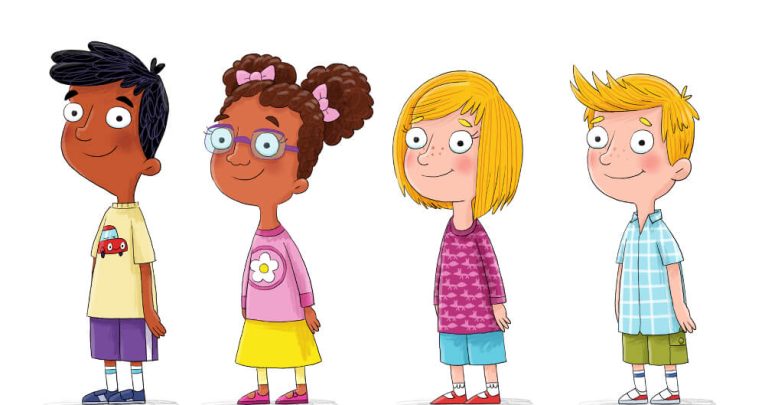Children’s Books Need More Diverse Characters

Shockingly few kids’ books feature characters of colour or with disabilities – it’s our responsibility to challenge that

We are two white, middle-class, picture book writers. Are we really the right people to be writing an article about diversity in children’s books?
When I (Adam) began teaching in Greenwich, back in the Stone Age, the only picture book in my classroom with a hero who wasn’t a white boy, animal, alien or monster was Amazing Grace by Mary Hoffman. And it was the same at home.
I (Charlotte) remember a childhood filled with books in which boys took the lead, while girls stayed behind and made tea. I grew up reading books that told me the world was full of adventure and opportunity for middle-class white boys.
Obviously, things are so much better now, but it is still shocking how few children’s books feature children of colour or with disabilities.
And if they are included, they are often relegated to the role of sidekick. And we still have a long way to go before boys read about girl protagonists as unquestioningly as girls do the opposite.
So, when an amazing, once-in-a lifetime chance came for us to write the character-led strand in a brand new reading scheme, of course we said, ‘Yes!’.
Our publisher wanted us to write the stories in a contemporary setting that showcased characters who all readers could recognise and feel empathy with.
None of us wanted this to be done in some self-righteous way to tick a diversity box, but because it’s what all stories should aspire to do.
A narrative doesn’t really work if the characters and readers are not challenged in some way, resulting in a reflection that might lead to a subtle shift in viewpoint.
As teachers, we constantly commute between interactions with our pupils that are authoritative, supportive and challenging. A lesson without a challenge is like a story without a point.
Perhaps the next time we share a book with children in our care, we can ask them whether they recognised anything about themselves in the story and if not, why not? We can also ask whether it affected the way they engaged with it. The good news is that things are changing in publishing. The reading scheme we wrote shows girls on the International Space Station, demonstrating leadership and loving science.
Boys care for animals and are sensitive to each other’s feelings. There are single parents, stay-at-home dads and mixed-race families. All the characters, whatever their background, can take the lead in any of the books.
The world of picture books is improving too – look out for Steve Antony’s Amazing, where the main character has a pet dragon and just happens to use a wheelchair.
Yasmeen Ismail’s I’m a Girl is a wonderful celebration of all the different ways it’s possible to be female.
Izzy Gizmo by Pip Jones and Sara Ogilvie is about a sparky, determined girl inventor who happens to be black.
Cas Lester’s Nixie series includes fairies that are boys, dark-skinned or wearing hijabs.
Educators are also doing great things to spread the word about books with diverse characters. Teacher-led initiatives Reading Rocks (@_reading_rocks_) and Oxford Reading Spree (@oxreadingspree) are just two very impressive examples.
Recently, the latter co-hosted a debate about whether children have the right to be exposed to books which subvert gender norms, celebrate diversity and build empathy and acceptance. These discussions are fantastically supportive and informative, keeping everyone who follows them up-to-date with the best books.
Our initial reactions to writing this article about diversity were wrong. It is our responsibility to challenge ourselves when it comes to diversity. Talking about this topic is everyone’s business and there is still a long way to go.
All children need to see themselves represented in stories, overcoming setbacks, solving problems and being the hero. But child readers also need to read about characters who aren’t like them, so they can understand different points of view and learn empathy.
And most importantly of all, by reading stories about all sorts of children, readers will realise how much we have in common. Those of us who grew up shaped by the assumptions made in the books we read as children need to start challenging the status quo.
In that case, maybe this piece by two white, middle-class picture book writers is not a bad place to start after all.
 Charlotte and Adam Guillain are the authors of the Comet Street Kids series of books from Rising Stars Reading Planet. Find them at adamandcharlotteguillain.co.uk and follow them on Twitter at @cguillan and @aguillan.
Charlotte and Adam Guillain are the authors of the Comet Street Kids series of books from Rising Stars Reading Planet. Find them at adamandcharlotteguillain.co.uk and follow them on Twitter at @cguillan and @aguillan.











